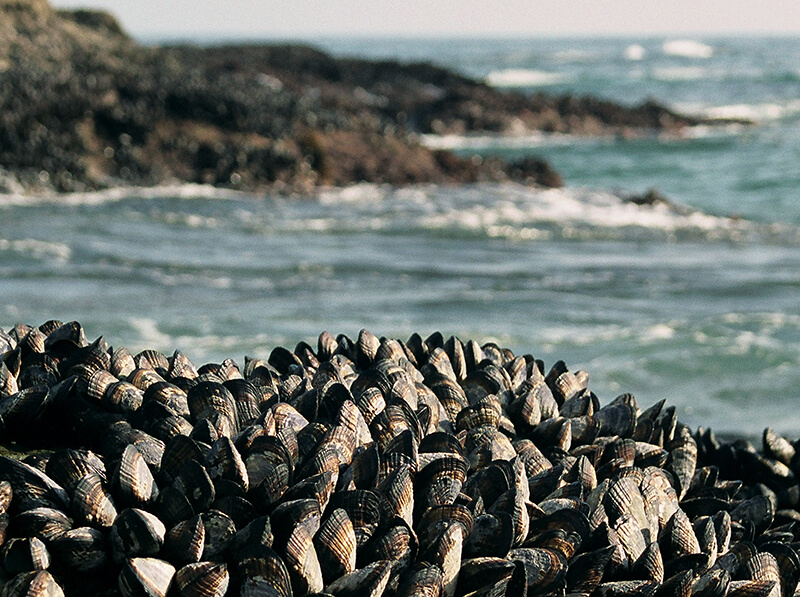
A Purdue University innovator who studies ocean creatures to develop adhesives is now turning his team's attention to the changing chemistry of seawater to gain insights to design adhesives for consumer products. (Image provided)
WEST LAFAYETTE, Ind. – A Purdue University innovator who studies ocean creatures to develop adhesives is now turning his team's attention to the changing chemistry of seawater – to see how it may affect the ability of animals to stick – and then use these insights to design adhesives for consumer products.
Jonathan Wilker, a Purdue professor of chemistry and materials engineering, has spent years studying how marine mussels secrete sticky plaques for attaching themselves to wet surfaces. His research group uses these discoveries to create new, biomimetic adhesives for everything from electronics and vehicles to construction structures and cosmetics.
Wilker details his team's findings in the latest edition of the journal Environmental Science & Technology. The National Science Foundation and the Office of Naval Research provided support for this work.
Wilker said the mussels' adhesive is rich in iron, which is thought to help make the attachments strong and flexible. So, his team set out to test what happens when the animals are surrounded by different concentrations of iron.
"We wanted to understand how mussels' access to environmental iron might influence the formation and performance of their adhesive system," Wilker said.
The researchers grew animals in waters with low, regular and excess iron.
"We found that there was a general trend in which the strength of the mussels' adhesive tracked with iron levels in the surrounding seawater," Wilker said. "When there was less iron, the glue was weaker. More iron than normal brought about the strongest bonding. At an extreme excess of iron, however, performance dropped."
Beyond understanding how animals make materials, there is a link for this work to ongoing climate change.
"Most iron in seawater is particulate, in solid forms. Mussels are filter feeders and they collect their food, as well as this iron, by filtering the water," Wilker said. "As the oceans become more acidic, iron transitions from solid to more dissolved forms. In the years to come, if less iron is in solid forms, these filter feeders will have difficulty capturing the iron that they need for making their adhesive. Seeing a fairly direct correlation between seawater iron content and mussel adhesive performance provides us with ideas for designing new and robust synthetic materials."
Wilker works with the Purdue Research Foundation Office of Technology Commercialization






